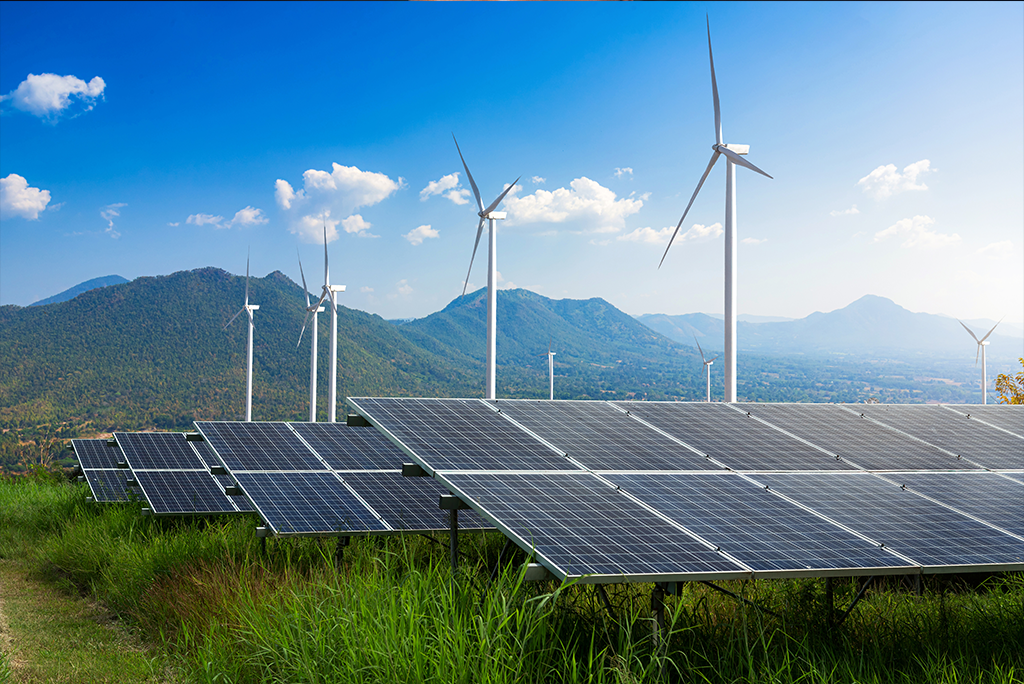
Power outages are soaring due to climate change. In 2020, extreme weather was responsible for a 73% spike in blackouts, according to PowerOutage.US, a site that aggregates utility power outage data. With global temperatures on track to rise by over 2.7 degrees Celsius (4.9 degrees Fahrenheit) by the end of the century, rising outages will continue to pose obstacles for grid operators. To limit temperature increases, nations around the world need to switch to renewable energy sources.
U.S. President Joe Biden’s administration recently announced how the nation could achieve nearly half of its electricity generation from solar power by 2050. While the plan could dramatically reduce emissions, it will also depend on integrating renewables into electrical grids— an effort that will come with numerous challenges. For example, renewables can act as important sources of backup power during blackouts, but they currently cannot restart the grid on their own even when a variety of renewables are integrated.
“While renewables are preferable to fossil fuel generators from an emissions standpoint, power output from renewable sources depends on variable natural resources, which makes these plants more difficult to control and presents challenges for grid operators,” Kathryne Cleary and Karen Palmer, researchers at Resources for the Future, state in a 2020 report titled, “Renewables 101: Integrating Renewable Energy Resources into the Grid.”
Will Grid-Forming Inverters Transform Renewables?
Given this reality, achieving 50% of U.S. electricity from solar power by 2050 may seem unlikely. However, an emerging technology is showing promise that it can be done. According to E&E News, electronic devices called “grid-forming inverters” can convert direct current from wind and solar generation and batteries into “tightly controlled up and down waves of alternating current that deliver the grid’s energy,” allowing them to restart a grid in the wake of a blackout. While the technology is promising, scaling it over large regions is difficult. To determine ways to overcome this challenge, a new consortium, backed by the Department of Energy and led by the National Renewable Energy Laboratory (NREL), has been spearheaded.
“You have to coordinate now across not just one city, but across states, and that’s where our research will be going,” Deepak Ramasubramanian, a technical leader at the Electric Power Research Institute (EPRI), told Utility Drive.
The consortium includes the EPRI and the University of Washington with support from national labs, universities, and industry researchers. Its ultimate goal, according to Ramasubramanian, is to determine how to achieve full inverter-based resource penetration at a scale of the Western Interconnection, which is a wide area synchronous grid. (It is also one of two major alternating current power grids in the U.S. power transmission grid.)
The consortium is also tasked with creating standard specifications for inverter manufacturers. These will also guide grid operators on the control and operation of an inverter-based system.
As global temperatures continue to rise, so too will power outages and the demand for renewable energy. While there are obstacles, grid-forming inverters may be a potential solution for transitioning electrical grids to renewable energy.
Understand the Smart Grid
Do you want to get a better understanding of the smart grid? Check out Modernizing the Smart Grid, a four-course online learning program from IEEE.
One of the biggest frontiers in electrical engineering today is the development and implementation of smart grid technology. Fueled by the global demand for greener technologies and alternative fuels, environmentally-friendly smart grid technology can stimulate stagnated economies. Furthermore, it has the potential to change the way power is delivered to electricity consumers around the world.
Modernizing the Smart Grid, available for individuals on the IEEE Learning Network, is designed to get you and your team up to speed quickly on the latest smart grid technologies.
Interested in bulk discounts for your organization? Get in contact with an IEEE Account Specialist.
Resources
Hering, Garrett. (19 January 2021). US power outages jumped 73% in 2020 amid extreme weather events. S&P Global Market Intelligence.
Behr, Peter. (16 September 2021). This grid technology could make or break Biden’s solar plans. Energy Wire – E&E News.
Penrod, Emma. (8 September 2021). DOE funds $25M consortium to develop grid-scale inverters, standards. Utility Drive.
Penn, Ivan. (8 September 2021). From 4% to 45%: Energy Department Lays Out Ambitious Blueprint for Solar Power. The New York Times.
Cleary, Kathryne and Palmer, Karen. (15 April 2021). Renewables 101: Integrating Renewable Energy Resources into the Grid. Resources for the Future.


No comments yet.